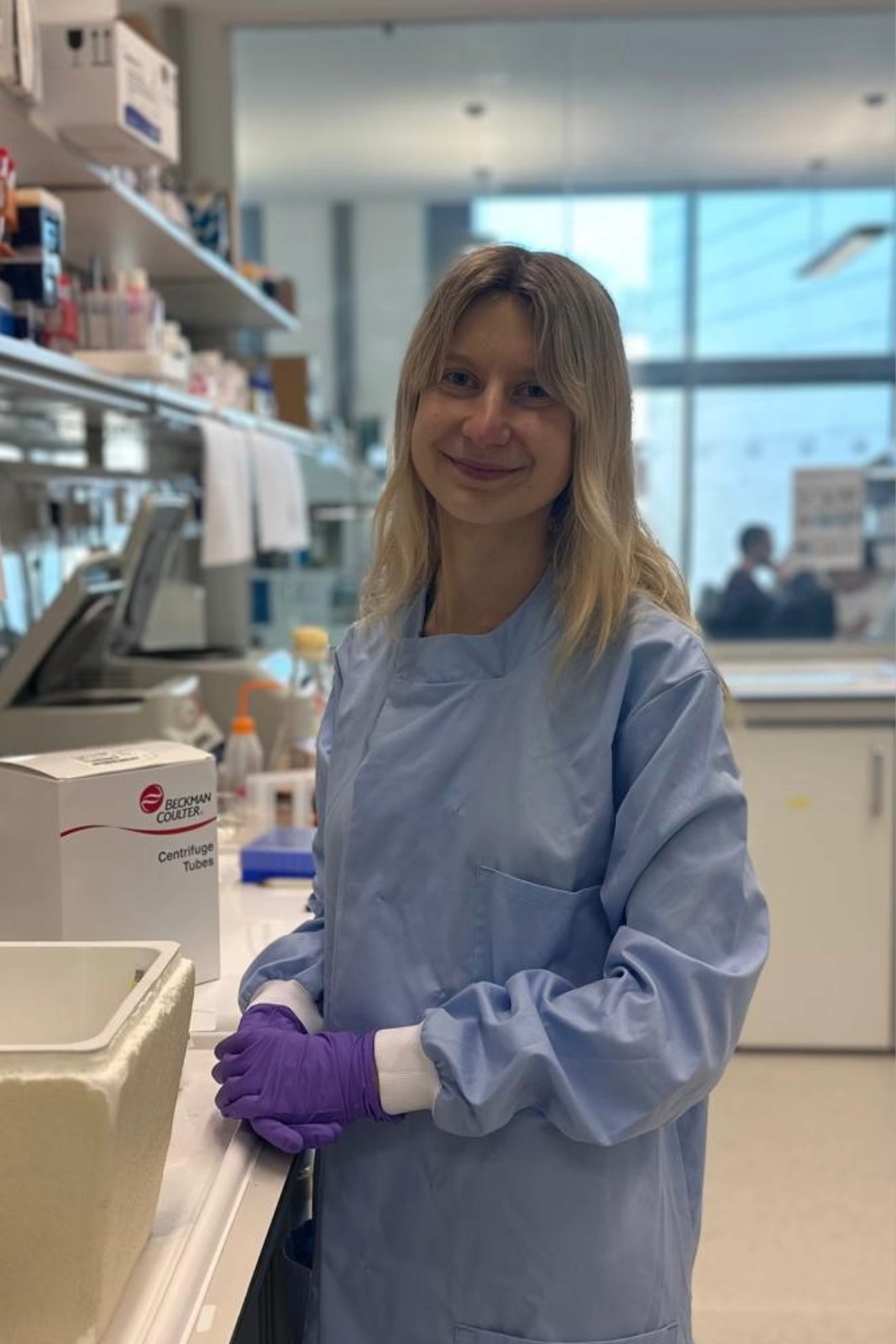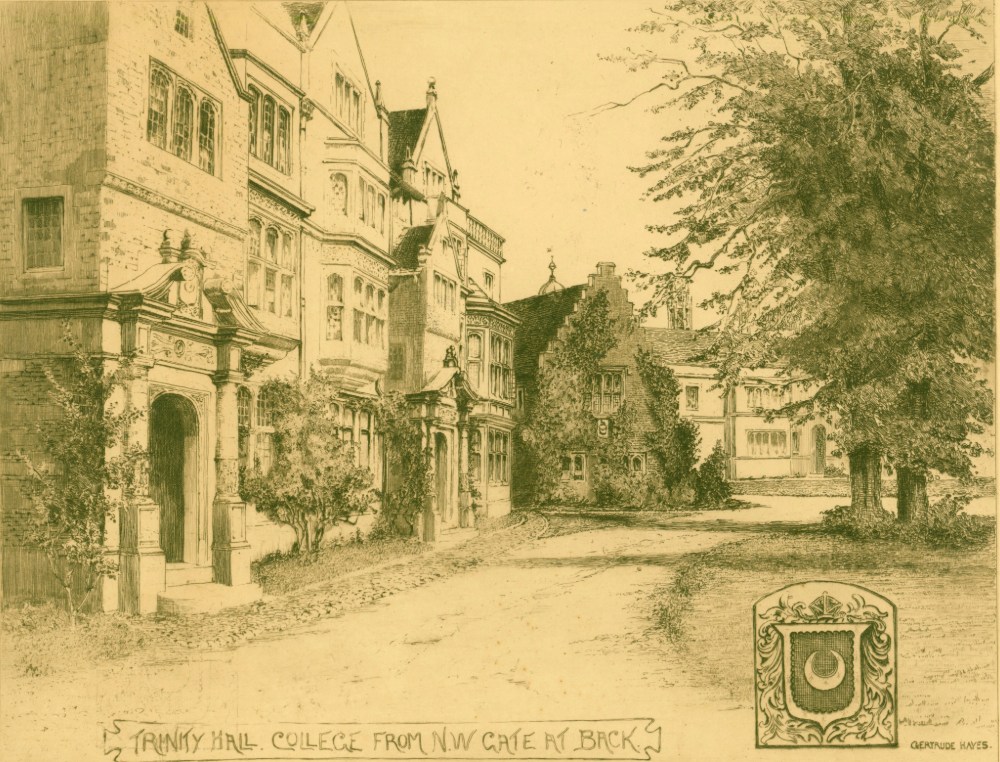Dr Sofia Lövestam researches brain diseases, such as Alzheimer’s, at the molecular level. She is passionate about furthering our understanding of these life-changing diseases and supporting people of all ages to reach their potential and spark their curiosity. Sofia joined Trinity Hall in October 2024 as Research Fellow in Natural Sciences (Biochemistry).
Five minutes with a Fellow
Posted:
28 May 2025

How do you explain your research to non-specialists?
I study brain diseases called tauopathies, where a certain protein in the brain, known as tau, starts clumping together. The most common tauopathy is Alzheimer’s disease. These tau clumps can form a kaleidoscope of shapes, where each shape is linked to a different disease. The longer you have the disease, the more the clumps grow and spread throughout the brain, making it harder for the brain to work properly. We don’t know why these proteins clump together in specific ways, so my research tries to understand how and why this happens at the molecular level.
How did you become interested in this research area?
I became interested in this problem as an undergraduate biochemistry student at Imperial College London. We were learning how proteins fold into their functional shapes: a process driven by many factors that are still not fully understood. Our lecturer explained that one main driving force in protein folding is the hydrophobic collapse where hydrophobic amino acids cluster inside the protein’s core, while hydrophilic amino acids face outwards towards the surrounding water. Then, he introduced something different and a bit unusual in that certain proteins may misfold and can recruit other proteins to misfold in a templated way. To illustrate this, he showed us a picture of a lasagna. He explained that just like the layers of pasta stack on top of one another, these misfolded proteins also stack in layers, forming long and stable structures. This stacking process keeps repeating, making more and more layers and this is what we call an amyloid. I was absorbed by this idea. Amyloids play a key role in many neurodegenerative diseases, including Alzheimer’s, Parkinson’s, and a progressive neurodegenerative disorder, Amyotrophic Lateral Sclerosis (ALS). But amyloids aren’t always harmful. For example, they also appear in melanin pigment formation; however, in this case, the process is controlled, and the amyloids can be safely removed after melanin production has taken place. There is a personal connection to Alzheimer’s disease here too. I’ve seen loved ones lose themselves and be consumed by anger. This is a heartbreaking tragedy that should not exist.
When are you most fulfilled in your job?
There are many aspects that make me feel fulfilled in my job. I am incredibly lucky that my job is also my passion. I often find myself “working” simply because I enjoy it so much. Some of the most fulfilling moments are when I’ve been thinking about a problem for a while, tinkering with experiments and then start to see progress. I use an electron microscope, which is like a light microscope, but instead of light, it uses electrons. Because the wavelength of an electron is much shorter, we can see much smaller things, like proteins and amyloid filaments. This means that with my experiments, I can see what is happening and receive direct feedback which is invaluable. Observing the experiment after testing a hypothesis is deeply satisfying. I also feel fulfilled seeing my students excel. One of my former master’s students is now pursuing a PhD at Stanford, and he is one of the smartest people I have met. He always keeps me updated and knowing he is thriving is incredibly rewarding. Watching my master’s students become independent in the lab is just as fulfilling as any scientific breakthrough, especially when we do this together.
How can your research contribute to solving key problems in human health?
Alzheimer’s is currently incurable. One of the main reasons for this is because we don’t understand why the proteins misfold and can recruit other proteins while spreading through the brain. I am working on understanding this at the molecular level, and I hope that if we can understand how it happens, it will be simpler to treat the diseases with targeted therapies.
What are your hopes for the future of disease research?
For the diseases themselves, a cure would be ideal. However, even if a cure is developed, it does not necessarily mean we’ve understood the disease itself. My hope for the field is that we can accurately describe the initial trigger in the molecular mechanisms behind these neurodegenerative diseases. These diseases are also a race against time: we need to catch them early. It would be very valuable to know the clinical symptoms correlate with the neuropathology.
Can you tell us about your work with younger generations?
Where I work at the MRC Laboratory of Molecular Biology, we have lots of opportunities to take part in STEM initiatives. We often share what we do with children, both online and in person. During our open-door day, I gave a presentation to teach an audience of all ages about Alzheimer’s disease. I’ve educated children in the use of electron microscopes and biology. It is important to spark children’s curiosity about everything around them! At times, biology can feel like stepping into an Alice in Wonderland – like world. It is fun to show this to them and see their eyes light up.
Back to all
